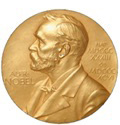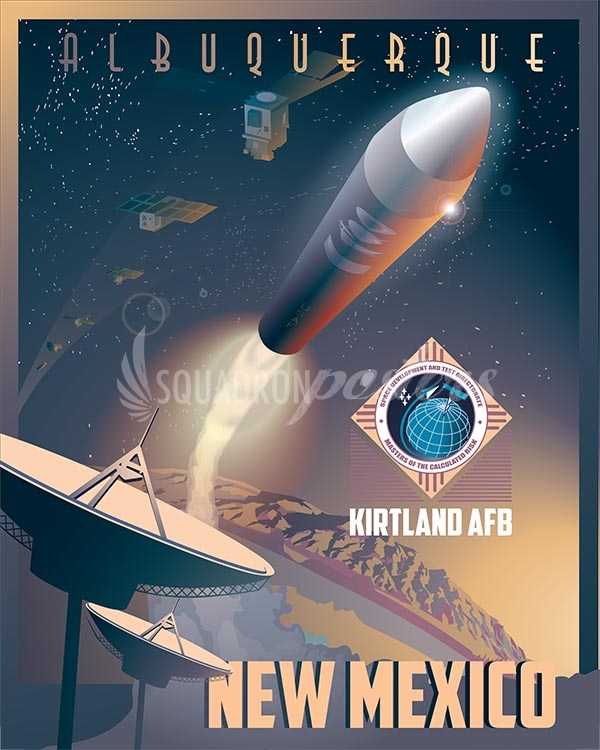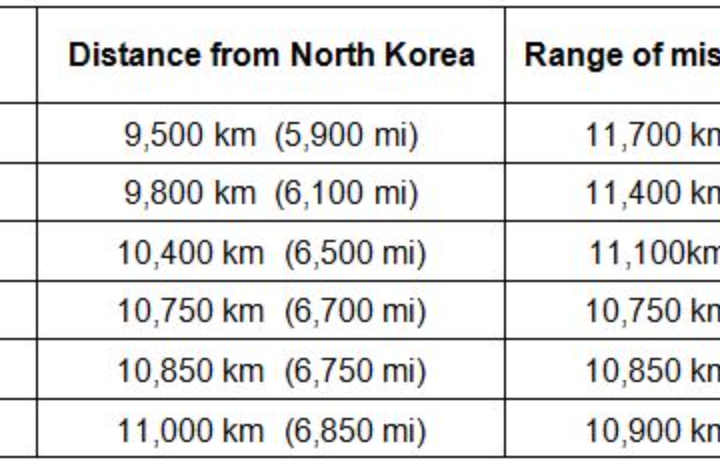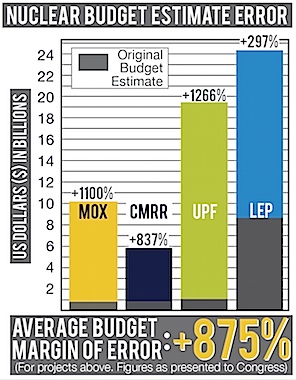-
President Donald Trump agrees to meet with North Korean leader Kim Jong Un, a significant development in the decades-long effort to denuclearize the Korean Peninsula.
-
“Great progress being made but sanctions will remain until an agreement is reached,” Trump tweeted Thursday.
- Trump’s decision bypasses the traditional negotiation process in favor of a top-level face-to-face meeting.
Archives: News
The worrisome aspects of Trump’s Nuclear Posture Review represented the arguments of the “Second Nuclear Age” hawks, i.e. that the world is no longer bi-polar, that the US needs more small nukes widely deployed so as not to be caught with either no response or a strategic response in regional conflicts, where the adversary might doubt we would go strategic. Thus US ‘deterrence’ had weakened. In this view, numerous smaller, widely deployed nukes are meant to sustain ‘deterrence’ into the more chaotic “Second Nuclear Age”.
On the other hand, the Russian response is framed by their overriding anxiety that the US, with its missile defense systems surrounding Russia, and NATO troops on Russian borders, is intent on developing the ability to win a nuclear war with Russia. Russia is afraid of the destabilization of the Cold War strategic equilibrium model, wherein neither side sought an advantage so great that it might consider a surprise attack. ABMs – anti-ballistic missile systems- were banned so that neither side could hope to launch a first strike and take out the remaining retaliatory missiles with a missile defense system.
The Russian high command stated last year that they in fact did now think the US was working to develop this capability (ref). The Trump Nuclear Posture Review, with its emphasis on war-fighting nukes, only reinforced Russian command fears that the US could be preparing for a fight. The weapons systems Putin announced last week were all noted for their ability to defeat missile defenses and thus, in the Russian view, to preserve ‘MAD’- mutually assured destruction- the Cold War’s solution to preventing a nuclear war. To understand better the Russian view, it’s worth remembering what Yuri Andropov said in 1981:
“The US is preparing for war but it is not willing to start a war… They strive for military superiority in order to ‘check’ us and then declare ‘checkmate’ against us without starting a war.” (ref)
Putin’s speech to the Federal Assembly March 1, 2018:
“Back in 2001, the US announced its withdrawal from the Anti-Ballistic Missile Treaty. Russia was categorically against this. We saw the Soviet-US ABM Treaty signed in 1972 as the cornerstone of the international security system…
Together with the Strategic Arms Reduction Treaty, the ABM Treaty not only created an atmosphere of trust but also prevented either party from recklessly using nuclear weapons, which would have endangered humankind, because the limited number of ballistic missile defense systems made the potential aggressor vulnerable to a response strike.
We did our best to dissuade the Americans from withdrawing from the treaty. All in vain. The US pulled out of the treaty in 2002…
Despite our numerous protests and pleas, the American machine has been set into motion, the conveyer belt is moving forward. There are new missile defense systems installed in Alaska and California; as a result of NATO’s expansion to the east, two new missile defense areas were created in Western Europe: one has already been created in Romania, while the deployment of the system in Poland is now almost complete…”
Defeating missile defenses, from Putin’s speech to the Federal Assembly, March 1:
– The Sarmat ICBM “is untroubled by even the most advanced missile defense systems.”
– A nuclear-powered, nuclear-capable cruise missile: “invincible against all existing and prospective missile defense and counter-air defense systems.”
– A high-speed, deep ocean nuclear drone “There is simply nothing in the world capable of withstanding them.”
– The RS-26 “Avangard” (aka YU-71) A nuclear-capable hypersonic glide vehicle that can travel at 20 times the speed of sound. “It flies to its target like a meteorite, like a ball of fire”
The intersection of these two contrasting frames of reference could see misunderstandings, confusion, and conflict. Putin seemed to feel obliged to make a clear warning.
“We are greatly concerned by certain provisions of the revised Nuclear Posture Review, which… reduce the threshold for use of nuclear arms… in response to conventional arms attacks and even to a cyber-threat.”
As such, I see it as my duty to announce the following.
Any use of nuclear weapons against Russia or its allies, weapons of short, medium or any range at all, will be considered a nuclear attack on this country. Retaliation will be immediate, with all the attendant consequences.”
But he continued:
“There should be no doubt about this whatsoever. There is no need to create more threats to the world. Instead, let us sit down at the negotiating table and devise together a new and relevant system of international security and sustainable development for human civilization. We have been saying this all along. All these proposals are still valid. Russia is ready for this.
And in closing,
“I hope that everything that was said today would make any potential aggressor think twice, since unfriendly steps against Russia such as deploying missile defenses and bringing NATO infrastructure closer to the Russian border become ineffective in military terms and entail unjustified costs, making them useless for those promoting these initiatives.
It was our duty to inform our partners of what I said here today under the international commitments Russia had subscribed to. When the time comes, foreign and defense ministry experts will have many opportunities to discuss all these matters with them, if of course our partners so desire.”
Stephen Cohen: How Washington Provoked- and Perhaps Lost- a New Nuclear-Arms Race
WIPP Could Get $79M Budget Increase Under Trump’s DOE Funding Proposal
“The potential increase would mark a $79 million boost in WIPP’s funding compared with enacted spending in FY 2017, while several infrastructure projects are ongoing at the site to increase airflow and continue to expand the facility’s underground nuclear waste repository.”
Trump: On the US Nuclear Arsenal
“We’re modernizing and creating a brand new nuclear force. And frankly, we have to do it because others are doing it. If they stop, we’ll stop. But they’re not stopping. So, if they’re not gonna stop, we’re gonna be so far ahead of everybody else in nuclear like you’ve never seen before. And I hope they stop. And if they do, we’ll stop in two minutes. And frankly, I’d like to get rid of a lot of ’em. And if they want to do that, we’ll go along with them. We won’t lead the way, we’ll go along with them…
But we will always be number one in that category, certainly as long as I’m president. We’re going to be far, far in excess of anybody else.”
For more see Politico
Pence Snubs Peace Initiative at Winter Olympics
Experts have been saying for some time that there is no good military solution to the Korea crisis. The best way to see the crisis defused would, of course, start with a rapprochement of the two Koreas. In fact the State Dept. recently said that the US would have no objection to a unified Korea as long as it was de-nuclearized. So that path was in the wind, but when the two Koreas initiated a peace and reconciliation effort at the Olympics, US Vice President Pence refused to go along.
Pence spent the days leading up to Friday’s opening ceremonies warning that the North was trying to ‘hijack the message and imagery of the Olympic Games’ with its ‘propaganda.’
But the North was still welcomed with open arms to what South Korean President Moon Jae-in called ‘Olympic games of peace’ and the U.S. appeared to be the one left out in the cold.
Pence sat stone-faced in his seat as Moon and North Koreans officials stood together with much of the stadium to applaud their joint team of athletes. White House officials stressed that Pence had applauded only for the American team, but Asia experts said the vice president’s refusal to stand could be seen as disrespectful to the hosts.
While South Korean President Moon did not hesitate to shake hands and smile with his North Korean visitors, Pence didn’t appear to even look in the direction of the North Korean delegation during the Friday event.
Seems the Trump administration would rather threaten than talk.
Pence’s Anti-North Korea PR Campaign Bombs
US Vice-President Mike Pence rains on Olympic parade with Korea team snub
DPRK Develops its Nukes For The Same Reason We Keep Ours: Deterrence
We often hear these days that the North Korean nuclear weapons program is a failure of deterrence. It is not. DPRK’s nuke forces were developed for the same reasons ours exist: to deter another state from attacking it. (In particular, the US.) DPRK’s program is a confirmation of the concept of deterrence.
The concept of deterrence means a state has nuclear weapons so other states dare not attack. As such all states might aspire to develop a deterrent. Our ‘deterrence’ was never meant to prevent states form going nuclear, only to prevent them from attacking us.
Preventing other states from going nuclear was the purpose of the 1968 Non-Proliferation Treaty. The NPT deal was that non-nuclear weapons states would abstain from developing nuclear arsenals in exchange for a promise from the nuclear weapons states to negotiate in good faith to achieve genuine reductions and eventual abolition of nuclear arsenals. The nuclear weapons states have not done that. They still have 15000 nukes. That is the failure.
DPRK’s nuclear development isn’t down to a failure of deterrence but rather a failure of the nuclear weapons states to abide in good faith by the Non-Proliferation Treaty.
NM Senator Martin Heinrich Letter to Sec.Def. Mattis Warning Against “Bloody Nose” Attack on North Korea
“Massive gamble”, “risk of mass casualties and utter devastation”… Urges diplomatic efforts…
ICAN Honored: 2017 Nobel Peace Prize Ceremony
- 6.36 – Address of Nobel Committee leader Berit Reiss-Andersen on the choice of ICAN for the 2017 Peace Prize (view transcript)
- 35.12 – Presentation of the award to ICAN’s Beatrice Fihn and Setsuko Thurlow
- 44.22 – ICAN Director Beatrice Fihn address (view transcript)
- 1.03.55 – Setsuko Thurlow address (view transcript)
The Particular Problem of ICBMs
The presidential authority to launch a nuclear strike alone stems from the Cold War, when the US feared a Soviet missile strike against US ICBM silos; our missiles had to be launched before theirs hit, and Soviet missiles would reach targets in the US in 20-30 minutes, so there would be no time to consult a larger circle.
This is one of the reasons Former Secretary of Defense William Perry and General James Cartwright, former Commander of the US Strategic Command, cited in a letter to President Trump on October 31, urging him to abandon the ICBM leg of the triad, rather than forging ahead with an expensive full replacement ICBM arsenal. Because of the ‘use them or lose them’ logic, plus the fact that ICBMs cannot be recalled once launched, their letter identifies this leg of the triad as the most susceptible to an unintended or accidental nuclear war.
The Air Force hasn’t waited for the Nuclear Posture Review to be released this winter, already awarding contracts to Northrup Grumman and Boeing for the ‘modernized’ ICBM force, called Ground-Based Strategic Deterrent, or GBSD. (Lockheed is also in the competition – the Air Force will ‘down-select’ from three companies to two for the next phase of the program.) (ref)
James Doyle, The Bulletin, October 25:
“Ballistic missiles armed with nuclear warheads are enablers of the apocalypse.”
Nobel Peace Prize For International Campaign to Abolish Nuclear Weapons
“The Norwegian Nobel Committee has decided to award the Nobel Peace Prize for 2017 to the International Campaign to Abolish Nuclear Weapons (ICAN). The organization is receiving the award for its work to draw attention to the catastrophic humanitarian consequences of any use of nuclear weapons and for its ground-breaking efforts to achieve a treaty-based prohibition of such weapons. We live in a world where the risk of nuclear weapons being used is greater than it has been for a long time. Some states are modernizing their nuclear arsenals, and there is a real danger that more countries will try to procure nuclear weapons, as exemplified by North Korea. Nuclear weapons pose a constant threat to humanity and all life on earth.”
The award was the lead story this morning on Germany’s Deutsche Welle with a video interview with Yanthe Hall of ICAN Germany.
Democracy Now, Oct. 6: Amy Goodman interviews Tim Wright, Asia-Pacific director of ICAN on the Nobel award and the ban treaty. (watch segment).
Hawaii, California Preparing for North Korean Nuclear Attack
A startling headline, but alas, true. Precautionary measures no doubt, in case the angry war of words goes to military violence and a possible nuclear exchange. It’s unlikely Kim would fire a first strike at the US mainland; but in response to a US strike on North Korea, well maybe. Apparently, some people are seeing America’s ‘military option’ becoming more likely.
Hawaii residents told to prepare for nuclear attack as tensions reach new high
“The state will begin testing a siren warning system, a wailing sound, in November. It would give people about 12 to 15 minutes to get to safety, after which they would be required to stay indoors for 48 to 72 hours.”
-North Korea: California’s plans for nuclear attack revealed
“The threat of a nuclear attack on California is real enough that a regional task force circulated a document to help the state prepare for a ‘catastrophic’ strike.”
-From Independent.co.uk
See also October 10, 2017:
-University of Hawaii sent an email to students Monday with tips on how to prepare for a nuclear attack
B-52s Useless Without New Long-Range Nuclear Cruise Missiles
When asked by Hudson Institute Senior Fellow Rebeccah L. Heinrichs whether the LRSO is a weapon the US military truly needs for nuclear deterrence, Hyten said there was a “million reasons” for the program, most of which are classified.
Controversy After Another Test of the B61-12 Nuclear Smart Bomb
The editor-in-chief of Russia’s National Defense magazine, Igor Korotchenko, warned that the second test of the B61-12 could indicate that the US is speeding up its rearmament program while “both Washington and Brussels are considering the scenario of a limited nuclear war in Europe.” He added that NATO forces have already conducted drills in the Baltic Sea, including mock nuclear strikes on Russia. “During regular exercises, including those in the Baltic Sea, the air forces of NATO countries have repeatedly carried out combat training tasks involving tactical nuclear strikes on targets located in the northwest of our country,” Korotchenko told RIA Novosti (ref).
NNSA press release on the B61-12 tests: (view/download PDF)
There are an estimated 180 B61 nuclear bombs stored at NATO bases in Italy, Belgium, the Netherlands, Germany and Turkey.
Mattis: Yes, there are military options that do not put Seoul at Risk
Hans Nichols, NBC Pentagon correspondent, tweeted:
Mattis just dropped by Pentagon bullpen; “There are many military options, in concert with our allies”
Mattis confirms military options against N Korea that do not put Seoul at risk: “Yes there are, but I will not go into details.”
Russia Will Help Japan Clean Up Fukushima Disaster
Russian President Putin made the announcement at the Eastern Economic Forum in Vladivostok, Sept 7.
“Officials say the decommissioning of the wrecked Fukushima reactors will take several decades, and according to some estimates, the cost could reach $200 billion.”
North Korea: Sunday’s test was a hydrogen bomb small enough to fit an ICBM
Sunday morning North Korea set off what is thought to have been a 120 kiloton hydrogen bomb, a day after press pictures were released showing Kim Jong Un and staff with what was said to be a miniaturized thermonuclear warhead ready to load in an ICBM nose cone. [Note Sept 14: 38North has revised the estimated yield to 250 kilotons.
“Based on the seismic signature, the yield of this test definitely is an order of magnitude higher than the yields of the previous tests…”
– Catherine Dill, James Martin Center
In China, the blast was felt as a strong tremor (USGS: 6.3 mags.) shaking windows. Chinese officials said they were carrying out emergency radiation testing along the border with North Korea.
North Korea’s brief period of “restraint”, what Secretary Tillerson called a possible “pathway” to dialogue, is over, following the launch of a missile over Japan on August 28, and now it’s most powerful nuclear test to date. Pres. Trump had said only last week that his threat to rain “fire and fury” on North Korea was working and that Kim was “starting to respect us”. Well, apparently not. Kim probably feels like he’s on a run, and might just as well go full speed ahead; he may well believe he has outplayed the US and won’t be stopped. Some have suggested that when Kim feels he has an effective enough arsenal to deter the US, he may be ready for a freeze or suspension and negotiations toward a peace treaty. On the other hand, one can imagine that he may see no need of that, and just keeps growing his nuclear forces. (Note that at some point he will also be a threat to China.)
The test was rather irritating for China, as Premier Xi is hosting the BRICS Conference this week, an important element of China’s foreign policy agenda, and he will not like being upstaged by Mr Kim’s latest feat.
Regarding the Hwasong-12 missile launch on August 28:
In “North Korea’s Hwasong-12 Launch: A Disturbing Development” Michael Elleman, 38North.org wrote: “An alternative disturbing hypothesis is that tests of the missile have included a small post-boost vehicle (PBV) to provide extra boost to the payload after the main stage is discarded…” read more…
Recommended: End the 67-year war by Robert Alvarez, at the Bulletin. “It’s time to find a path to end the 67-year-long Korean war. As the threat of military conflict looms, the American public is largely unaware of the sobering facts about America’s longest unresolved war and one of the world’s bloodiest.” read more…
September 13: DPRK launches another missile over Japan, with greatest range yet, enough to hit Guam.
What Will Be Different After September 20, 2017?
“So here is a question for all of us to think about: how will it change the global conversation when a treaty is affirmed by so many countries from all over the world? What will it feel like to know the clock is ticking down to nuclear weapons abolition . . . instead of worrying that the clock is ticking down to nuclear war? What will be different about the way people talk about the behavior of the states that still stubbornly hold on to nuclear weapons (and threaten each other with them)? In what light will it cast the countries that rely on the “nuclear umbrella” of countries like the US?”
-Joe Scarry, “Nuclear Weapons Abolition: What Will Be Different After September 20?”
Navy Families Sue Fukushima Operators for Wrongful Death
Families of five Navy service members who died after responding to the Fukushima nuclear meltdown have sued Tokyo Electric Power Co., blaming the deaths on radiation illnesses contracted from the March 2011 disaster.
The families will join a lawsuit from 152 other members or survivors of members of the 7th Fleet who performed humanitarian response from March 11, 2011 until March 14, when the USS Ronald Reagan aircraft carrier was moved away from Fukushima due to detection of nuclear radiation in the air and on helicopters returning to the ship.
USAF awards contracts for new nuclear missile to Lockheed, Raytheon
The Air Force is on track to replace the aging AGM-86B Air Launched Cruise Missile with modernized weapon capabilities designed for its nuclear bomber fleet, to include the B-21.
Today, the Air Force awarded contracts to Lockheed Martin Corporation and Raytheon Company to mature design concepts and prove developmental technologies for the new Long Range Standoff weapon.
North Korea: Red Lines Crossed, Threats Intensify
“If they do not now accept our terms, they may expect a rain of ruin from the air,
the like of which has never been seen on this earth.”
“They will be met with fire and fury the likes of which this world has never seen before…”
Within hours of Trump’s “fire and fury” warning, North Korea announced it was “carefully examining” plans to launch 4 missiles toward Guam.
Could we be seeing the confluence of events that bookends a 72-year hiatus with another nuclear bombing in Asia?
August 8: The Washington Post is reporting that a ‘confidential assessment’ by the “intelligence community” that Kim has already miniaturized his bombs, that he has as many as 60 nukes, that he’s scaling up his ICBM missile production… in other words, red lines crossed.
Senator Lindsay Graham, Aug 1, 2017: Trump has “got to choose between homeland security and regional stability… If there’s going to be a war to stop [Kim Jong Un], it will be over there. If thousands die, they’re going to die over there. They’re not going to die here. And [Trump’s] told me that to my face. That may be provocative, but not really. When you’re president of the United States, where does your allegiance lie? To the people of the United States.” Read More…
So here we stand on the brink of nuclear hostilities. Note that the nuclear weapons state with the smallest arsenal and a barely functioning ICBM is still an existential threat, even to the country with the largest arsenal and the most advanced delivery systems on the planet.
It seems that the nuclear weapon is most useful to the smallest power, transforming it from a military gnat into a lethal danger to even the most powerful states.
One would think that it would be in the interest of the powerful country to seek the complete removal of nuclear weapons from the picture. ASAP. But in fact, given the opportunity- of the Ban Treaty negotiations for example- the US has refused to have anything to do with any such effort. (“We do not intend to sign, ratify or ever become party to it.”) Instead, a trillion dollar renewal and ‘modernization’ of our nuclear forces are planned.
Where does that road lead?
UCS: North Korean ICBM in latest test appears able to reach major US cities, including New York
Union of Concerned Scientists Reports that, like the previous test on July 8, North Korea launched its missile on a highly lofted trajectory; a standard intercontinental trajectory, accounting for the Earth’s rotation, would give it range to hit New York City, and only 100 kilometers short of Washington DC.
Black Saturday, October 27, 1962.
In the midst of the Cuban Missile Crisis, this was the day Vasily Arkhipov did not use the nuclear torpedo against the US ship dropping depth charges on it. It was also the day a US U2 was shot down over Cuba, killing the pilot. It was also the day this happened.
60 yrs ago, the biggest nuclear weapon in the US arsenal was accidentally dropped 5 miles south of Albuquerque, New Mexico
On May 27, 1957, 5 miles south of the Albuquerque airport, a Mark 17 H-bomb (pictured at left) was accidentally dropped from a B-36 Peacemaker on it’s way to Kirtland AFB. The plutonium pit was not on board, but the fissile ‘spark plug’ detonated. Bits of the bomb, the biggest ever deployed by the US at 15-20 megatons, could still be found in the area (see picture below). But the authors of this 2010 report urged the collecting public to hurry, as the area would soon be covered over by a development called “Mesa del Sol”. And so it now is.(source: Carl Willis, “Albuquerque, Ground Zero”)




